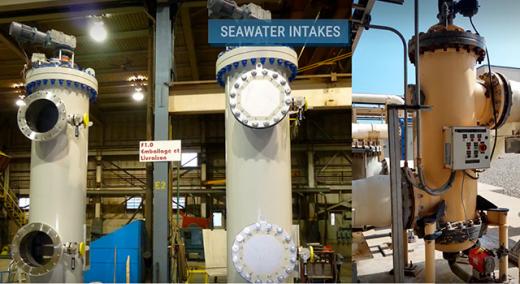Along the coasts and in many countries, seawater is widely used for cooling systems at power plants, as well as for some mining and industrial processes. The challenge, however, is that strainers must sufficiently filter out both small particles (e.g., sand, silt, suspended solids) and larger detritus (seaweed, aquatic life, marine debris) to reduce the risk of fouled processes and production downtime. In addition, strainers must be designed to resist corrosive seawater. Fortunately, advanced strainer design and alternative construction materials can dramatically reduce fouling and corrosion while cutting costs.
|
ADVERTISEMENT |
In power plants, once steam passes through a turbine it must be cooled and returned to the water state before it can be reused to produce more electricity. For this type of application, once-through systems take in water from the ocean, circulate it through pipes to absorb heat from the steam in condenser systems, and discharge the seawater back to the ocean. Once-through systems are popular due to their simplicity and low cost as well as the abundant supply of seawater.
…

Add new comment